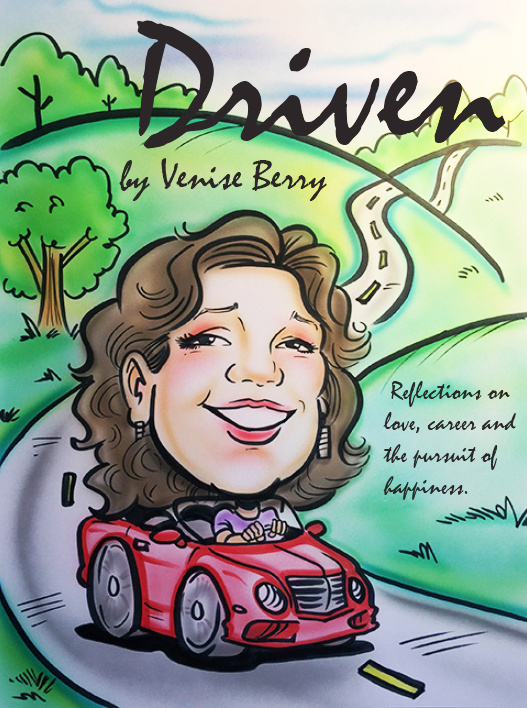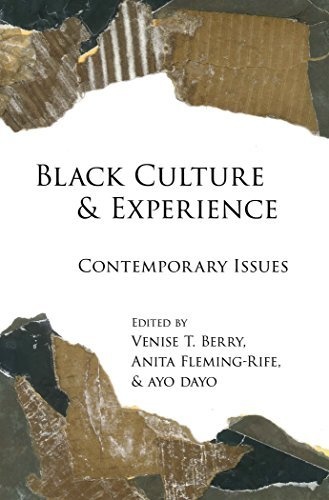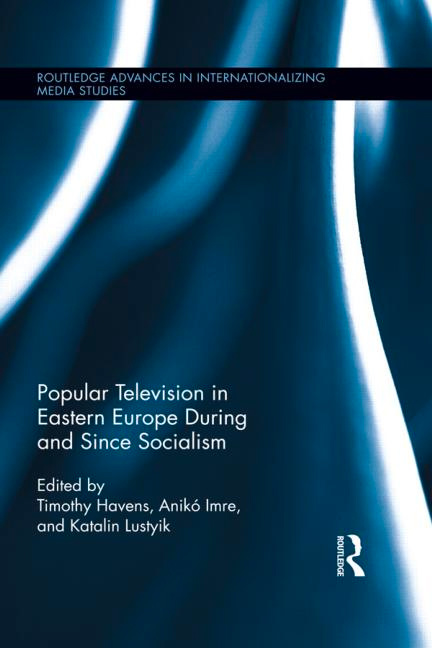Books and Publications
Midwest Unrest: 1960s Urban Rebellions and the Black Freedom Movement (2025)
Ashley Howard
In the nation’s so-called heartland, racism is sometimes subtler than in other parts of the country but just as insidious. When Black communities across the United States went up in flames in the 1960s, Midwest cities, where racial inequity was endemic, were among those most likely to burn. Midwest Unrest explores those rebellions, paying particular attention to the ways that region, race, class, and gender all played critical and often overlapping roles in shaping Black people’s resistance to racialized oppression.
Reading Pleasures: Everyday Black Living in Early America
Tara Bynum
In the early United States, a Black person committed an act of resistance simply by reading and writing. Yet we overlook that these activities also brought pleasure. Tara A. Bynum tells the compelling stories of four early American writers who expressed feeling good despite living while enslaved or only nominally free. The poet Phillis Wheatley delights in writing letters to a friend. Ministers John Marrant and James Albert Ukawsaw Gronniosaw memorialize their love for God. David Walker’s pamphlets ask Black Americans to claim their victory over slavery. Together, their writings reflect the joyous, if messy, humanity inside each of them. This proof of a thriving interior self in pursuit of good feeling forces us to reckon with the fact that Black lives do matter. A daring assertion of Black people’s humanity, Reading Pleasures reveals how four Black writers experienced positive feelings and analyzes the ways these emotions served creative, political, and racialized ends.
Racialism and the Media: Black Jesus, Black Twitter, and the First Black American President
Venise Berry
The nature of racial ideology has changed in our society. Yes, there are still ugly racists who push uglier racism, but there are also popular constructions of race routinely woven into mediated images and messages.
In the twenty-first century, we need a more nuanced understanding of racial constructions. Denouncing anything and everything problematic as racist or racism simply does not work, especially if we want to move toward a real solution to America’s race problem.
Racialism includes, but moves beyond traditional racism. It involves images, ideas, and issues that are produced, distributed, and consumed repetitively and intertextually based on stereotypes, biased framing, and historical myths about African American culture. These representations are normalized through the media, ultimately shaping and influencing societal ideology and behavior.
Soundtrack to a Movement: African American Islam, Jazz, and Black Internationalism (2021)
Richard Turner
Amid the social change and liberation of the civil rights and Black Power movements, the tenor saxophonist Archie Shepp recorded a tribute to Malcolm X’s emancipatory political consciousness. Shepp saw similarities between his revolutionary hero and John Coltrane, one of the most influential jazz musicians of the era. Later, the esteemed trumpeter Miles Davis echoed Shepp’s sentiment, recognizing that Coltrane’s music represented the very passion, rage, rebellion, and love that Malcolm X preached.
Soundtrack to a Movement examines the link between the revolutionary Black Islam of the post-WWII generation and jazz music. It argues that from the late 1940s and ’50s though the 1970s, Islam rose in prominence among African Americans in part because of the embrace of the religion among jazz musicians. The book demonstrates that the values that Islam and jazz shared—Black affirmation, freedom, and self-determination—were key to the growth of African American Islamic communities, and that it was jazz musicians who led the way in shaping encounters with Islam as they developed a Black Atlantic “cool” that shaped both Black religion and jazz styles.
Soundtrack to a Movement demonstrates how by expressing their values through the rejection of systemic racism, the construction of Black notions of masculinity and femininity, and the development of an African American religious internationalism, both jazz musicians and Black Muslims engaged with a global Black consciousness and interconnected resistance movements in the African diaspora and Africa.
Driven (2018)
Venise Berry
Driven, Reflections on Love, Career and the Pursuit of Happiness explores my evolution as one of those bra-burning, pants-wearing, education-getting, money-making, opinion-having, sex-enjoying, career-focused Black women who grew up in the 70's deciding to live life and live it abundantly with or without a man.
Like many career women, I flew through my twenties and thirties and forties, but fifty brought everything to a sudden stop. My fiftieth birthday was like a spiritual thief that snuck up behind me, held a gun to my head, and demanded my soul. That milestone triggered a deep longing to better understand the choices I'd made in my life, to examine my journey.
Offering words of wisdom, personal examples, cultural analysis, historical context, and suggestions for change, these essays will help readers think about the complexity of life's choices and the challenges facing women today, particularly when it comes to relationships vs. careers.
What Is This Thing Called Soul: Conversations on Black Culture and Jazz Education (2017)
Damani Phillips
How does academic jazz education impact the Black cultural value of soulfulness and esthetic standards in contemporary jazz music? Through candid conversations with nine of the country’s most highly respected jazz practitioners and teachers, What Is This Thing Called Soul explores the potential consequences of forcing the Black musical style of jazz into an academic pedagogical system that is specifically designed to facilitate the practice and pedagogy of European classical music. This work tests the belief that the cultural, emotional and esthetic elements at the very core of jazz’s unique identity, along with the music’s overt connection to Black culture, are effectively being "lost in translation" in traversing the divide between academic and non-academic jazz spheres. Interviews are supplemented by original analysis of the nature and validity of these issues contributed by the author.
Jazz Religion, the Second Line, and Black New Orleans (2016)
Richard Turner
In his new book, Richard Brent Turner explores the history and contemporary significance of the popular religious traditions, identities, and performance forms celebrated in the second lines of the jazz street parades of black New Orleans. The second line is the group of dancers who follow the first procession of church and club members, brass bands, and grand marshals. Here musical and religious traditions interplay. Jazz Religion, the Second Line, and Black New Orleans examines the relationship of jazz to indigenous religion and spirituality. It explores how the African diasporist religious identities and musical traditions―from Haiti and West and Central Africa―are reinterpreted in New Orleans jazz and popular religious performances, while describing how the participants in the second line create their own social space and become proficient in the arts of political disguise, resistance, and performance.
Black Culture and Experience: Contemporary Issues (2015)
Edited by Venise Berry, Anita Fleming-Rife, and Ayo Dayo
Black Culture and Experience: Contemporary Issues offers a holistic look at Black culture in the twenty-first century. It is a collection of work that creates a synergy among authors and leads to a valuable resource on contemporary issues. This anthology contains work from leading scholars, authors, and other specialists who have been brought together to highlight key issues in black culture and experience today. The goal is to help readers understand where we are and where we still need to go, what is working and what we still need to work on, what is right and what is still wrong.
Black Television Travels: African American Media Around the Globe (2013)
Timothy Havens
Black Television Travels explores the globalization of African American television and the way in which foreign markets, programming strategies, and viewer preferences have influenced portrayals of African Americans on the small screen. Television executives have been notoriously slow to recognize the potential popularity of black characters and themes, both at home and abroad. As American television brokers increasingly seek revenues abroad, their assumptions about saleability and audience perceptions directly influence the global circulation of these programs, as well as their content. Black Television Travels aims to reclaim the history of African American television circulation in an effort to correct and counteract this predominant industry lore.
Popular Television in Socialist and Post-Socialist Europe (2012)
Timothy Havens
This collection of essays responds to the recent surge of interest in popular television in Eastern Europe. This is a region where television's transformation has been especially spectacular, shifting from a state-controlled broadcast system delivering national, regional, and heavily filtered Western programming to a deregulated, multi-platform, transnational system delivering predominantly American and Western European entertainment programming. Consequently, the nations of Eastern Europe provide opportunities to examine the complex interactions among economic and funding systems, regulatory policies, globalization, imperialism, popular culture, and cultural identity. This collection will be the first volume to gather the best writing, by scholars across and outside the region, on socialist and postsocialist entertainment television as a medium, technology, and institution.
Understanding Media Industries (2011)
Timothy Havens
This is an introduction to the media industries, a topic that sometimes has its own course but is also incorporated into courses on media criticism, media literacy, and even a basic mass media course where the instructor wishes to teach from topical paperbacks as opposed to a big textbook. The book examines the influence of media industry organization and practices on society; at the same time, it offers students pursuing both scholarly and professional careers related to the media industries a comprehensive overview of how the industries work, why they work as they do, and what the broader theoretical and practical implications of the media industries are. Questions such as "why is media industry organization important?", "how do we make sense of media industry changes?" and "what are the key issues facing media industries?" animate the analysis.
Historical Dictionary of African American Cinema (2015, 2nd edition)
Venise Berry
Through a chronology, a list of acronyms and abbreviations, an introductory essay, a bibliography, appendixes, black-&-white photos, and hundreds of cross-referenced dictionary entries on actors, actresses, movies, producers, organizations, awards, film credits, and terminology, this book provides a better understanding of the role African Americans played in film history.
Islam in the African American Experience (2003)
Richard Brent Turner
The involvement of black Americans with Islam reaches back to the earliest days of the African presence in North America. Part I of the book explores these roots in the Middle East, West Africa, and antebellum America. Part II tells the story of the "Prophets of the City"—the leaders of the new urban-based African American Muslim movements in the 20th century. Turner places the study of Islam in the context of the racial, ethical, and political relations that influenced the reception of successive presentations of Islam, including the West African Islam of slaves, the Ahmadiyya Movement from India, the orthodox Sunni practice of later immigrants, and the Nation of Islam. This second edition features a new introduction, which discusses developments since the earlier edition, including Islam in a post-9/11 America.
Colored Sugar Water (2002)
Venise Berry
Colored Sugar Water introduces Lucy Merriweather and Adel Kelly, both dealing with life issues. Lucy is thirty-five, single, and in great shape thanks to her career as a fitness manager for a string of Texas health clubs. Adel is the vice president for human resources at American Oil, pulling in a six-figure salary and annual bonuses. Unfortunately, neither is happy.
Lucy struggles with her emotional and spiritual dreams. Her boyfriend Spencer, a basic kind of guy who loves his mama, sports, fried chicken, and Lucy in that order doesn't seem to measure up. So she decides to get out of her rut with a Sexy Soul Psychic named Kuba. Self-assured and sensitive, Kuba seems to know exactly what women want. Or does he?
Adel struggles with a husband, Thad, who refuses to grow up and a job that is less than satisfying despite its financial gains. She is eventually forced to reexamine her faith as she searches for a life that brings her closer to happiness and fulfillment.
Filled with the humor, passion, and pathos of modern relationships, Colored Sugar Water tells the story of two women who discover the power of their unique spiritual gifts.
So Good (2001)
Venise Berry
Three very different young African-American women - Lisa, a doctoral candidate, advertising executive Danielle, and Sundiata, a newlywed - turn to one another as they search for Mr. Right.
All of Me: A Voluptuous Tale (2001)
Venise Berry
Serpentine Williamson has a good life: an exciting career as a television reporter in Chicago, a sexy boyfriend, membership in a popular gospel choir, and a family who loves her. But in the midst of her positives lies a powerful negative - her lifelong struggle with weight.
After years of buying into fads and labels, Serpentine finds her world crumbling. And, finally losing the battle to uphold her plummeting self-esteem, she breaks down and needs to be hospitalized. All of Me is a heartwarming, inspiring, and often funny chronicle of Serpentine's fight for recovery. As she learns to meet her challenges with dignity and strength she also learns to love herself, for the first time, just the way she is. All of Me will resonate with women of all shapes and sizes and will once again affirm Venise Berry as a fresh voice in African-American women's fiction, whose snappy characters, according to Rosalyn McMillan, "double-dare you to put the book down."
The 50 Most Influential Black Films: A Celebration of African-American Talent, Determination, and Creativity (2000)
Venise Berry
The Fifty Most Important Black Films in an illustrated guide to 50 of the most important and socially significant movies made for, by and about African Americans. It is a resource book, that examines of how black films have shaped and reflected the times, influenced society, and impacted black culture.
Mediated Messages and African-American Culture: Contemporary Issues (1996)
Venise Berry
Images of African Americans abound in United States' culture - on television, in films, on the radio and in newsprint. Whether in works by African Americans - most notably popular music, film and now television programs - or works about African Americans, from documentaries to news coverage, strong images pervade our public consciousness.
Integrating applied analysis, case studies and critical perspectives, contributions from leading scholars explore key issues including: the relationship between black men and the police; the state of the African-American press; and the perpetuation of images of African Americans as poor, violent and under-educated.








